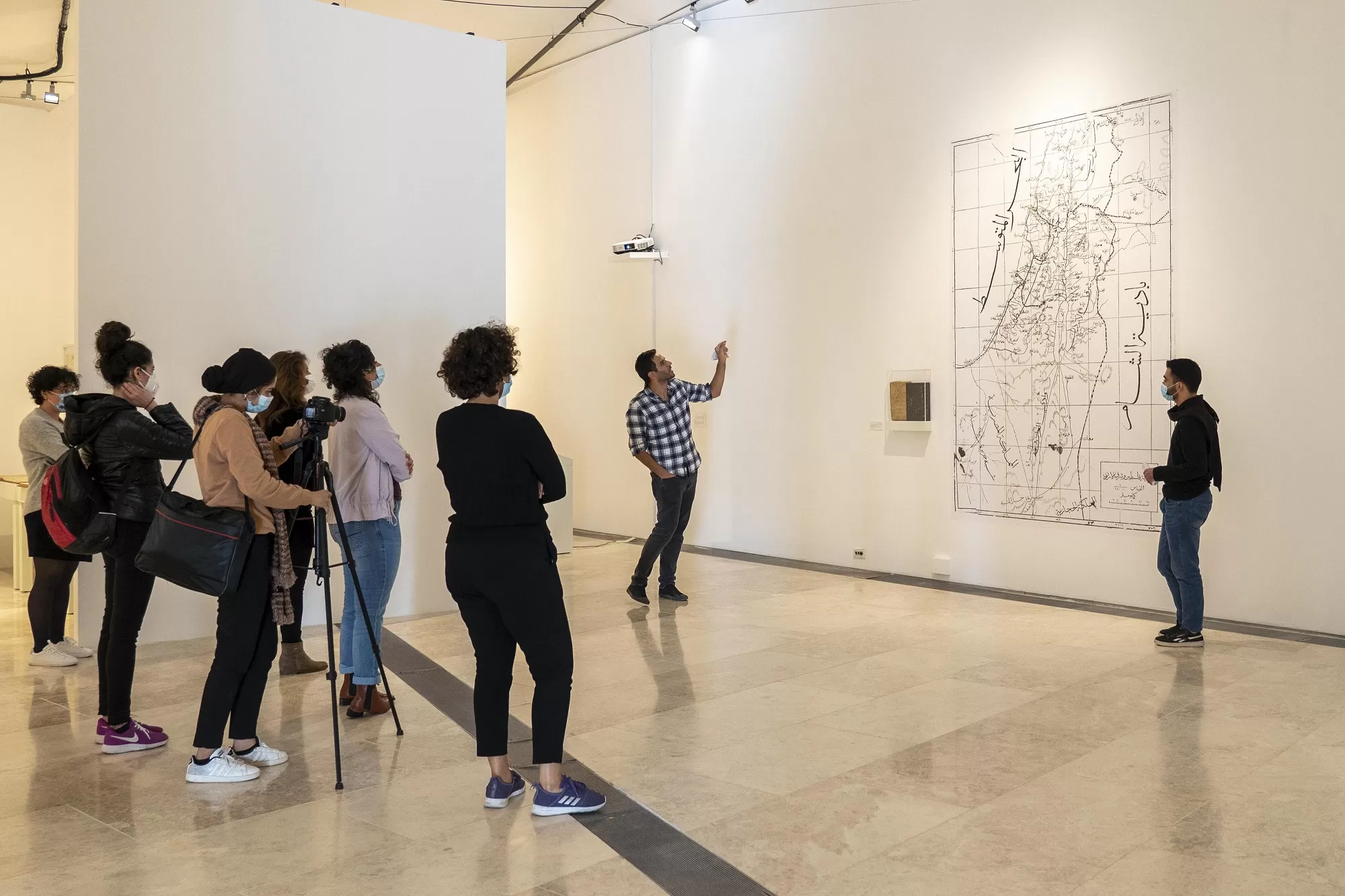
Birzeit: The Palestinian Museum announced the achievement of its set goals for the year 2020, and the expansion of its reach to new audiences through its digital programmes, in addition to the development of new methods of delivering museum experiences to the public. This comes amid the constraints imposed by the global pandemic on the culture sector and all aspects of life.
Like museums worldwide, the Palestinian Museum closed its doors to the public for several consecutive months, halting in-person events and activities. The Museum, however, immediately adapted its programme and digital platforms. It also opened its scheduled exhibition, Printed in Jerusalem: Mustamloun, and its first interactive family space, “Colour and Words Reveal the World”.
Director General of the Palestinian Museum, Adila Laïdi-Hanieh, PhD, said, “We believe we succeeded in meeting the year’s unexpected challenges thanks to our team’s tireless efforts during and after the lockdown. We presented a series of events and activities while expanding our reach so that our programme is enjoyed by an even wider audience as a source of both knowledge and recreation, affirming that #Palestine_Perseveres.”
Shortly following the announcement of the lockdown in Palestine, the Museum launched its “Museum from Home: Palestine perseveres” campaign. Over the span of several months, the Museum provided interactive digital content about Palestinian history and culture. It also launched a wide-ranging online programme to accompany Printed in Jerusalem: Mustamloun and other projects throughout the year. This included symposia, discussions, conferences, workshops, performances, virtual exhibition tours and Object-in-Focus talks.
Then, amid a complete lockdown in July, and prior to reopening to the public, the Museum launched the Printed in Jerusalem: Mustamloun exhibition online via guided video tours. The exhibition, organised in cooperation with Jerusalem’s Palestinian Heritage Museum at Dar-Al-Tifel Al-Arabi, and which explores the history of Jerusalem’s modernity and politics through its publications, runs until the end of February 2021. The Museum also opened its first educational and recreational family space, an interactive area that engages visitors of all ages in a variety of creative and educational activities. It aims to encourage children and families to create their own contributions, inspired by the exhibition and their museum experience.
The Museum’s online programme provided an opportunity for performing artists to experiment with new approaches to interacting with audiences. One notable example was Saheb al-Karmil (Owner of al-Karmil), a play written by Amer Hlehel, with actors Khawla Ibrahim, Ivan Azazian, Mohammad Basha, and the playwright about the challenges of a free press in Mandate Palestine. The play was readapted to be performed and filmed within the Printed in Jerusalem exhibition space as its stage. Similarly, soprano Mariam Tamari and pianist Fadi Deeb, prominent classical musicians of Palestinian origin, presented an online performance titled “al-Quds Arabiya: Musical Images of Palestine”, which garnered a worldwide audience. The Museum also produced an exhibition tour video for children, featuring storytellers and musicians Mira Abu Hilal and Jalal Nader.
In fulfilment of its new strategic plan, early in the year, the Museum announced the launch of 17 grants for research about Palestinian culture, aimed at encouraging intellectual engagement and at filling knowledge gaps in Palestine’s history and culture. It is the largest research grant initiative ever offered to foster scholarship on Palestinian culture. Research outcomes and publications will be unveiled at the end of 2021.
The Museum also achieved its set target and concluded phase one of assembling the Palestinian Museum Digital Archive, the largest of its kind in Palestine and the Arab world. The Archive thus far comprises over 200,000 documents that relate to the daily life of Palestinians and to their history. The Museum is on track to proceed with phase two in 2021.
Fulfilling a goal set upon the building’s inauguration, and cementing its role as a green and eco-friendly building, the Museum completed the Installation of its solar panels. The panels will be connected to the Palestinian electricity grid, and will be capable of generating 320 Kilowatts at peak performance, thus covering the Museum’s yearly energy needs.
In November, the Museum launched its first crowdfunding campaign, “Let’s Bring Our Thobes Back Home”, aimed at bringing a collection of historic Palestinian embroidered thobes and their accessories back home from the US. The campaign succeeded in reaching its funding goal and generated attention across social media platforms.
The Palestinian Museum expects to fulfil its set plan for the year 2021, which includes the launch of a new exhibition about the Palestinian coast; the unveiling of research grant activities; engaging more artists, academics and cultural actors in its projects and activities; and expanding the Education Programme’s in-person and online reach to more students.



